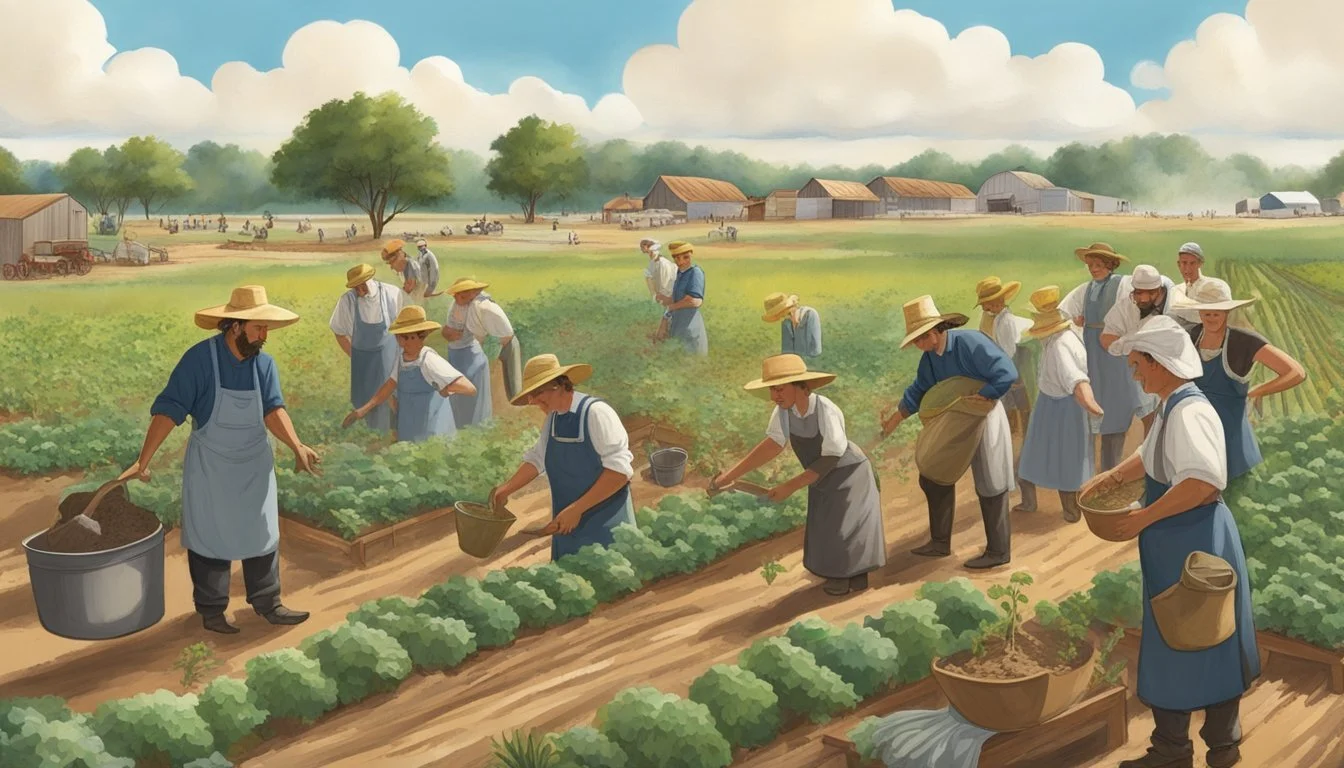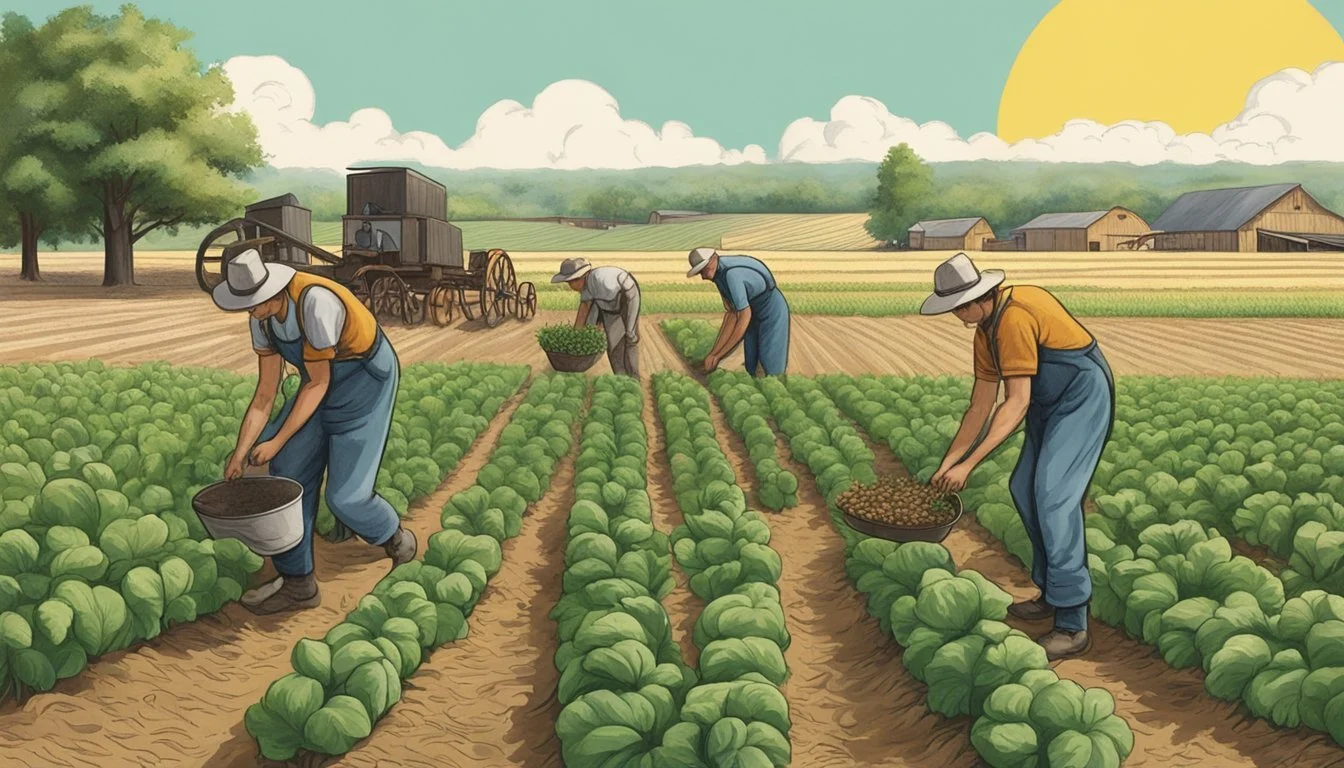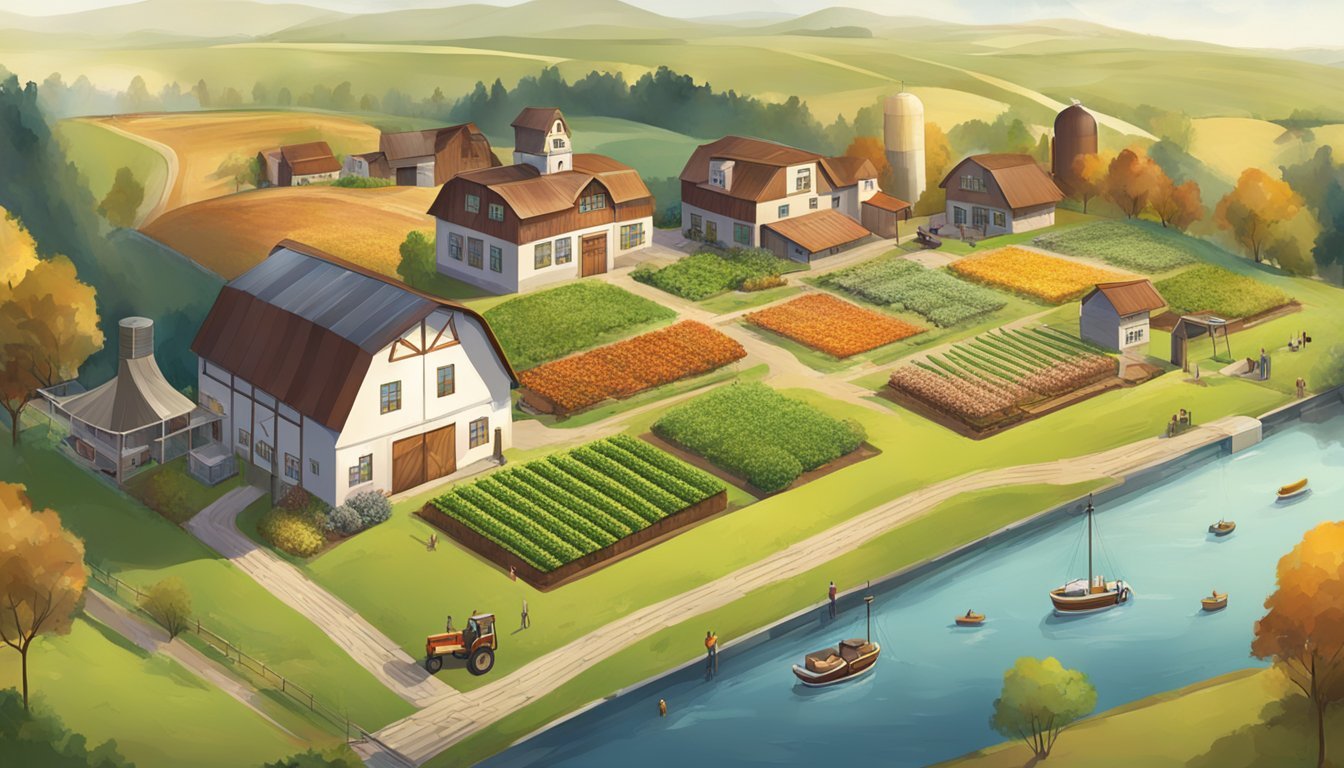The Influence of German Immigrants on Texas Farm-to-Table Movements
Cultural and Culinary Impact
The cultural landscape of Texas represents a tapestry woven from the threads of diverse settler histories, with German immigrants contributing significantly to its richness. Their impact extends into the realm of agriculture, where their legacy can be traced through the farm-to-table movements that thrive in the state today. As early as the mid-19th century, German settlers began to arrive in Texas, bringing with them agricultural practices and culinary traditions that would deeply influence local food systems.
These immigrants, escaping economic hardship and seeking new opportunities, settled into what would become known as the German Belt of Texas. Their agricultural methods, characterized by a strong work ethic and a knowledgeable approach to farming, optimized the use of local resources. This cultivated a tradition of community supporting agriculture. They leveraged their expertise to develop a connection between the land and the table, setting the stage for a movement that values fresh, locally sourced produce.
Their influence is particularly evident in the local food scene, where German traditions have harmoniously integrated with Texan culture. Farm-to-table restaurants and markets across Texas often feature produce and meats reminiscent of early German fare. The commitment to quality, sustainability, and community that defined early German settlements continues to shape Texas's approach to food and agriculture.
Historical Context of German Immigration to Texas
The expansive history of German immigrants in Texas begins in the early 19th century, marked by distinct social, cultural, and agricultural contributions that shaped the farm-to-table movements in the region.
Early German Settlers and Their Impact
German immigration to Texas initiated during the 1830s, with increasing numbers in the following decades. They were drawn to Central Texas by promises of land and economic opportunities. An organized colonization effort was led by the Adelsverein, also known as the Society for the Protection of German Immigrants in Texas. This society aimed to establish a new Germany within the fertile lands of Texas, facilitating a large influx of German settlers. By the mid-19th century, German communities had become a prominent part of the Texas landscape.
Social and Cultural Contributions
German settlers brought their local dialects, language, and architectural styles to Texas, contributing to the cultural mosaic of the state. They established towns like Fredericksburg and New Braunfels, which still today reflect the strong German heritage through their buildings, street names, and festivals. The preservation and celebration of German culture, traditions, and language have played significant roles in enriching the cultural tapestry of Texas.
Influence on Agriculture and Farming Practices
In agriculture, German settlers introduced farming techniques that were rooted in sustainable agriculture and echoed the burgeoning farm-to-table movement. Their knowledge of crop rotation and animal husbandry led to more sustainable farming practices in the region. The Germans in Texas were some of the first to emphasize the importance of local produce and were pivotal in developing Texas's reputation for agriculture. This perpetuated a legacy that persists in today's Texas farms, which continue to value sustainability and community-centered food systems.
Development of Texas Farm-to-Table Movements
The Texas farm-to-table movement reflects the convergence of traditional agriculture, local gastronomy, and an emphasis on sustainable practices. It's an evolving narrative of local economy and food security stitched closely with the fabric of Texan cuisine.
Introduction to the Farm-to-Table Concept
The farm-to-table concept advocates for a short distance between food production and consumption. It emphasizes the importance of sustainable agriculture, supporting local farmers, and a transparent food system. This movement gained national momentum in the 1970s with influential figures like Alice Waters, founder of Chez Panisse, advocating for organic and locally sourced ingredients. Its adoption within Texas played a significant role in cultivating a local economy and ensuring food security by fostering relationships between farmers, chefs, and consumers.
Integration into Texan Cuisine
Texan cuisine, with its rich tapestry of flavors, has been significantly shaped by German immigrants. They brought with them agricultural practices and culinary techniques that were seamlessly woven into local traditions. Ingredients like beef, crucial for the iconic Texas barbecue, and recipes for stews and tamales, were infused with a German touch. Local chefs began to embrace these influences, integrating locally-grown, German-inspired produce and meats into their culinary repertoire, thus enriching the farm-to-table cuisine of the state.
Rise of Farm-to-Table Restaurants
As the farm-to-table philosophy flourished, a variety of farm-to-table restaurants sprung up across Texas. These establishments prioritized ingredients sourced from nearby farms and often highlighted the provenance of their dishes. Chefs playing pivotal roles in this movement curated menus that not only celebrated organic produce but also showcased the state's multicultural heritage. Through their innovative recipes, they continually contributed to the evolving narrative of Texas's food scene and reinforced the connection between agriculture and gastronomy.
German Immigrants' Influence on Texas Cuisine
The integration of German culinary traditions into Texan foodways has resulted in a fusion that marries the robust flavors of German cuisine (What Wine Pairs Perfectly With German Cuisine) with the rich, smoky essence of Texas fare. This blend is particularly evident in the meats, pastries, and community celebrations that are now quintessential to the Texas food scene.
German-Texan Culinary Traditions
German settlers brought with them a wealth of food traditions that left an indelible mark on Texas cuisine. Central Texas, in particular, became a nexus where these German influences fused with local methods, leading to the creation of dishes that are both uniquely Texan and unmistakably grounded in German heritage. Central to this is the tradition of smoking meats, a technique that melds German sausages and meats with the deep-rooted barbecue culture of Texas.
Key Characteristics:
Barbecue Techniques: Adoption of German smoking methods.
Sausage Varieties: Introduction of European-style sausages with local tweaks.
Popular German Dishes in Texas
The Texas culinary landscape is dotted with German-inspired fare that showcases the enduring legacy of German immigrants. Dishes such as smoked sausages enriched with paprika and lard, and hearty portions of sauerkraut, act as culinary ambassadors of the German-Texan nexus.
Key Dishes:
Sausages: A variety of sausages incorporating traditional German spices.
Sauerkraut: Fermented cabbage served alongside smoked meats (What wine goes well with smoked meats?).
Food Festivals and Culinary Events
Across Texas, myriad festivals and events celebrate the convergence of German and Texan food traditions, with Oktoberfest being one of the most prominent. These events not only showcase traditional German fare but also highlight the symbiotic cultural exchange that impacts the broader landscape of Texas cuisine.
Notable Celebrations:
Oktoberfest: An annual celebration featuring authentic German foods.
Barbecue Competitions: Events often display German-influenced barbecue techniques.
Farming and Produce in Contemporary Texas
The evolution of farming practices and the prevalence of farm-to-table initiatives have defined the contemporary landscape of Texan agriculture, emphasizing organic farming and efficient sourcing.
Organic Farming and Local Produce
In Texas, there has been a significant shift towards organic farming, a method that prioritizes the use of natural processes. Farmers in the region are dedicated to producing a wide range of organic fruits and vegetables, which meet stringent health standards. These organic products are highly sought after in markets across the state due to their health benefits and quality. To support this demand, farm-to-table movements encourage the consumption of local produce, shortening the distance from farm to consumer and ensuring fresh, nutritious offerings.
Organic Produce Available in Texas
Fruits: Apples, Oranges, Peaches
Vegetables: Leafy Greens, Tomatoes, Peppers
Sourcing and Transportation of Goods
The sourcing and transportation of agricultural goods are critical components of Texas' farm-to-table movement. Farmers and markets often coordinate closely to utilize a mix of transportation methods including trucks, railroads, and parcel post to distribute produce efficiently. This ensures that fruits and vegetables reach consumers quickly to maintain freshness and quality. Handling and logistics are carried out with a focus on sustainability and reducing the carbon footprint associated with transportation.
Transportation Methods for Produce in Texas
Truck: Ideal for short and medium distances, flexible routes
Railroad: Efficient for large volumes over long distances
Parcel Post: Used for small-scale deliveries, especially in remote areas
Impacts on Local Communities and Economies
German immigrants significantly contributed to establishing strong farm-to-table movements in Texas, affecting both local communities and economies by enhancing food markets and facing various challenges.
Strengthening the Local Food Market
In Texas, the farm-to-table concept received substantial support from German immigrants who valued locally sourced produce for its freshness and quality. This preference for local sourcing helped strengthen markets in both rural and urban areas, promoting a more sustainable and community-focused approach to food consumption. In cities like Fredericksburg and New Braunfels, which were established by German settlers, one can observe a pronounced influence in the retailers’ practices of procuring produce directly from farmers. This model not only supports the local economy by keeping spending within the community but also helps in maintaining a lower carbon footprint due to reduced transportation needs.
Enhancement of local farmers' income
Creation of jobs in local markets and eateries
Encouragement of artisanal and organic farming practices
Challenges and Opposition
Despite the benefits, the farm-to-table movement spearheaded by German immigrants faced its share of challenges and opposition. The use of certain traditional farming practices, sometimes at odds with modern agricultural methods, led to skepticism. Moreover, the rejection of pesticides and inorganic fertilizers, while environmentally friendly, occasionally resulted in lower crop yields, pitting economic interests against ecological and health benefits. Furthermore, while the local food movements promote economic vitality within communities, they sometimes clash with larger, non-local retailers who can struggle with the competition.
Primary Challenges:
Balancing traditional farming practices with modern agricultural demands
Competing with large-scale retailers and markets
Overcoming misconceptions about the efficacy of organic farming
Modern Farm-to-Table Infrastructure
The Texas farm-to-table movement has evolved through robust links between food producers and advanced technology. This modern infrastructure ensures the quality and sustainability of locally-sourced food.
Role of Producers and Suppliers
Producers, including farmers and butchers, are the cornerstone of the farm-to-table supply chain. They provide fresh, high-quality ingredients that are the hallmark of this movement. Farmers work diligently to grow a variety of crops suited to the Texan climate, while butchers process meat from local livestock breeds. These suppliers frequently interact with restaurants and consumers, maintaining a transparent and reliable food system.
Farming practices have adapted to prioritize organic and non-GMO produce, catering to a consumer base that values nutritional quality and environmental stewardship. Farmers' markets and food hubs are integral, acting as conduits for the distribution of these goods directly from the source.
Impact of Technology and Innovation
Technology and innovation bolster the efficiency of the farm-to-table model. Precision farming practices, driven by sophisticated technology, enable producers to increase yields while minimizing their ecological footprint. Software for inventory management and platforms for direct sales are pivotal in streamlining operations.
Drones and satellite imaging offer valuable data, helping farmers make informed decisions on crop management. In addition, innovations in packaging and transport extend the shelf-life of food products, ensuring that they reach consumers in peak condition. This technological leap complements traditional farming with modern twists conducive to meeting growing demand.







